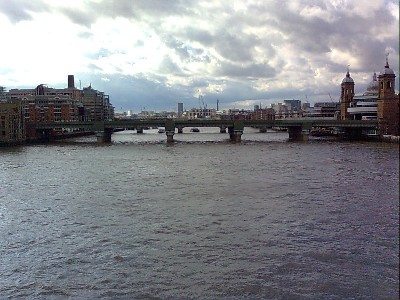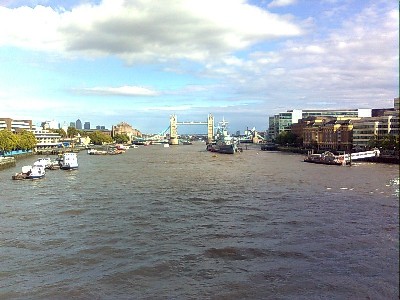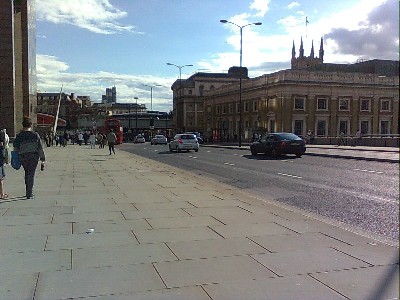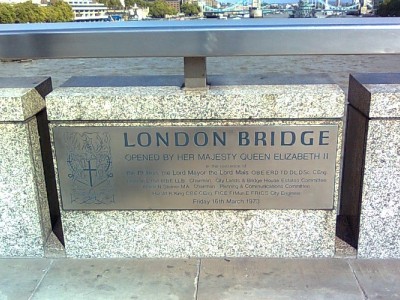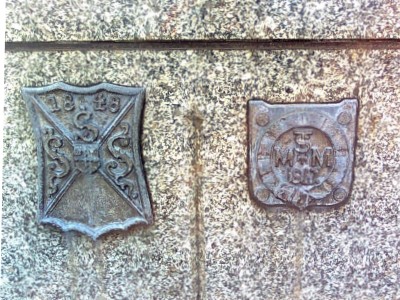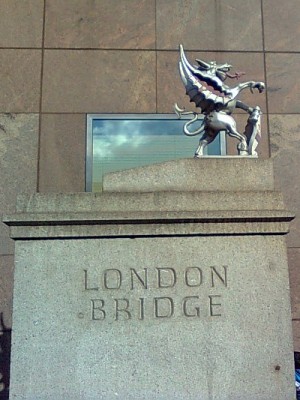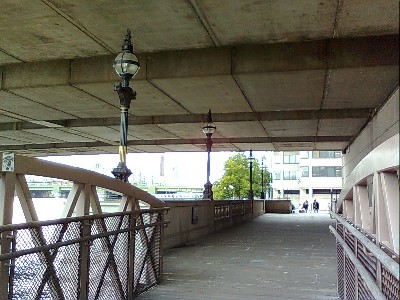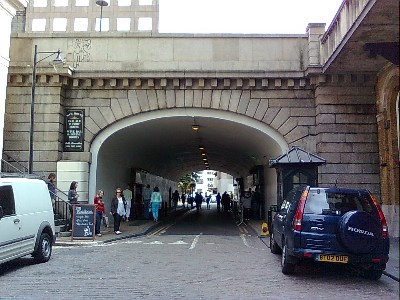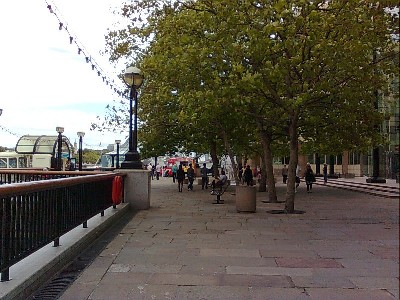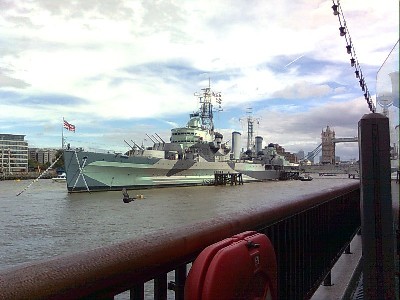
The first London Bridge, situated 200 metres east of the present bridge, was built by the Romans in about AD 50. Many bridges later the last bridge was officially opened in 1973. It is a three arched cantilevered bridge of pre-stressed concrete clad in polished granite. With a six lane roadway it is 30 metres wide. The bridge took five years to build and was built in four sections. The upstream section was built first and opened to pedestrians and traffic while the downstream section was built. The central sections were then constructed and all sections joined together and the surface added. London Bridge is the only hollow bridge to cross the Thames. This allows services to be carried within the bridge across the river. It also allows the footpaths to be heated in winter. The downstream footpath is wider than the upstream path as this is the side most used by commuters arriving at London Bridge station. The bridge that the new bridge replaced had been opened in 1831 and was an attractive bridge of five elliptical arches made of granite from Scotland and Devon. It was offered for sale and bought for the sum of one million pounds by the McCullough Oil Company in America. Each of the facing stones was removed and numbered, and at a cost of 100,000 pounds transported to the United States where it was reconstructed as the centrepiece of a tourist attraction in Arizona. Remnants of the old bridge can still be seen, some around the bridge and others further afield. Close by, an abutment and arch stands in Tooley Street. At the southern end of the bridge there are two blocks on the pavement. Four more can be seen beside the lake in Kew Gardens. Under the first arch of the bridge on the north side are four City of London lamps which are also thought to have come from the old bridge. |
